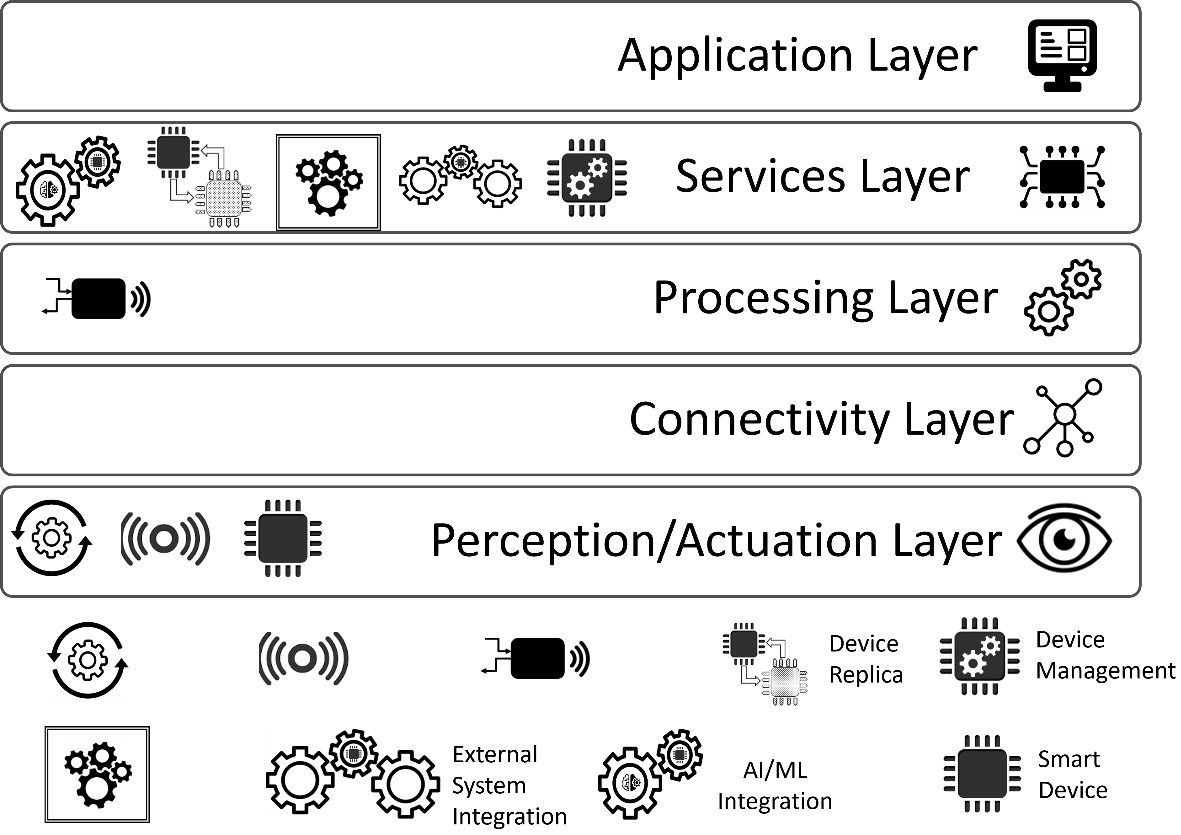IoT reference architecture
The IoT reference architecture follows a layered model, as shown in the following diagram:

Figure 1.2 – Layered IoT reference architecture
Let’s look at these layers in more detail:
- Perception/actuation layer: This layer indicates the physical layer where sensors (pressure, temperature, and so on) gather information about the environment. In turn, the environment is affected by the actuators (electric motor, thermostat control, and so on).
- Connectivity layer: This layer provides the connectivity required to send data (perception data from sensors and control commands to actuators, and so on) to/from the aggregation/processing layer. This layer is realized by leveraging connectivity options (5G, Wi-Fi, NB-IoT, LoRA, and so on). The decision to choose a specific connectivity option depends on various factors such as range and bandwidth.
- Processing layer: The processing layer ingests, analyzes, and stores data received from the connectivity layer. The processing can be performed either near the data source (edge computing) or in a private/public cloud. Data processing and storage elements, such as databases, data streaming engines, and AI/ML algorithms, form part of this layer.
- Services layer: This layer connects the processing layer to the application layer. Another way of looking at this layer is considering it as a set of APIs that can be consumed by the application layer to develop IoT applications such as smart homes, precision agriculture, smart manufacturing, and more.
- Application layer: This layer represents the applications that are to be used by end users. These applications are typically hosted at the edge or in the cloud (central server) and are consumed using mobile devices as mobile apps. Alternatively, they can be deployed on a web server and accessed using browsers.
The IoT patterns listed in subsequent chapters will align with the IoT reference architecture that we just discussed. Additionally, other important IoT topics listed in the latter part of the book (such as data analytics and IoT security) will also build upon the understanding of this concept.
The layered reference architecture provides various benefits, such as independent scalability of different layers and enhanced maintainability as change is restricted to specific layers. The IoT patterns will help you develop the required functionality at the specific layer in less time and in a reproducible fashion. The architectural patterns (detailed in subsequent chapters) that are relevant to the different layers of the reference architecture are shown in the following diagram:

Figure 1.3 – IoT patterns realized at different layers of the reference architecture
Next, we will look at the unique requirements that we should be aware of while implementing IoT use cases.

